Blackjack for Beginners: Your Step-by-Step Guide to Playing Like a Pro
Learning how to play blackjack doesn’t have to be intimidating or confusing. Whether you’re stepping onto a casino floor for the first time or playing online, this guide lays out the core rules, strategies, and etiquette in easy-to-follow steps. No complex jargon-just practical explanations to help you build confidence and maximize your fun at the blackjack table.
What You’ll Discover in This Blackjack Guide
By following this guide, you’ll learn:
- Fundamental rules and goals of blackjack-how to play against the dealer and what a winning hand means
- How card values and dealer mechanics shape every round
- The essential player actions: when to hit, stand, double down, or split pairs
- Straightforward beginner strategies to improve your odds
- How to avoid rookie mistakes and embrace table etiquette for a great gaming experience
Blackjack 101: Breaking Down the Essentials
Blackjack pits the player against the dealer, not other competitors at the table. The aim is simple: get a hand value as close to 21 as possible without exceeding it-and beat the dealer’s total.
Understanding Card Values
Blackjack uses a standard 52-card deck. Each card carries a value as follows:
- Ace: Counts as either 1 or 11, depending on which is more favorable for your hand
- Cards 2 through 10: Worth their face value
- Jack, Queen, King: Each valued at 10
For example:
- Holding a 3 and a 9 adds up to 12.
- Drawing a Jack and an 8 makes 18.
- An Ace with a King creates a 21-this is known as a “blackjack,” but only if it’s your initial two cards.
Only an Ace paired with a 10-value card on your first two cards is considered a “blackjack.” Having three cards that sum to 21 doesn’t qualify.
The Dealing Process
At the beginning of the round, the dealer gives each player two cards face-up. The dealer also deals themselves two cards-one shown, one face down.
If a player requests another card (a “hit”), it’s dealt face-up. Once every player has acted, the dealer reveals their hidden card. The dealer must then draw cards until reaching at least 17-if they go over 21, this is called a “bust.”
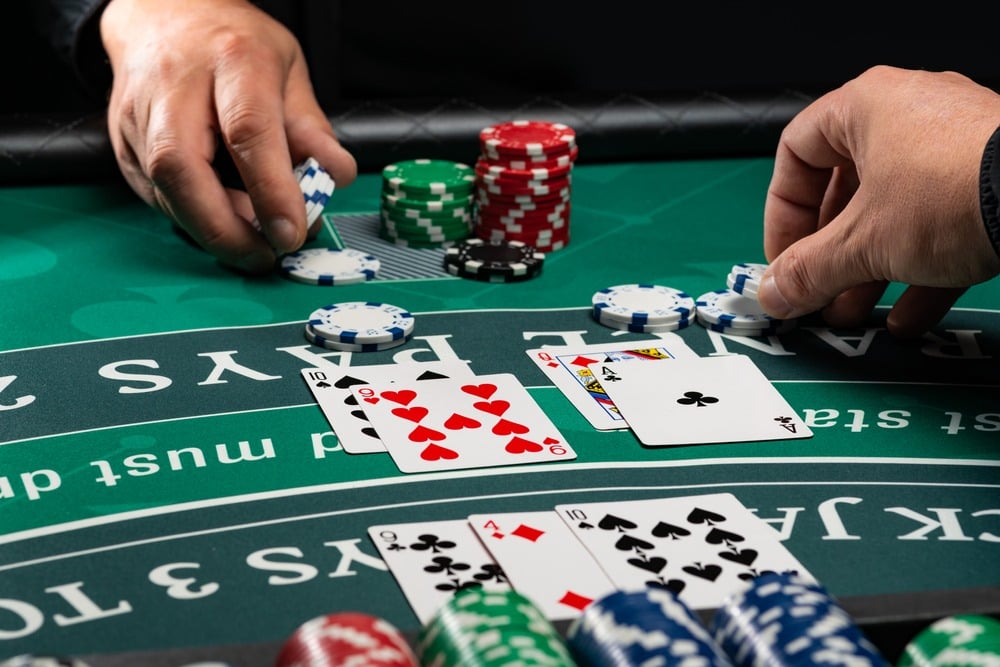
Image Credit: Netfalls Remy Musser/Shutterstock
Player Decisions: Navigating Each Turn
After receiving your initial two cards, you must decide on your next move. Here are the standard player options:
- Hit: Take another card to improve your total
- Stand: Decline more cards and stick with your current total
- Double Down: Double your original bet in exchange for only one more card
- Split: If your first two cards are of the same rank (like two 8s or two Aces), split them into two separate hands-each gets an additional card and you continue with two independent bets
If a hit pushes your total above 21, you automatically lose the hand.
Smart Choices: When to Hit or Stand
Deciding whether to hit or stand is at the heart of blackjack. Remember, about 30% of a deck (16 out of 52 cards) are valued at ten, making these cards statistically significant.
Let’s break down a few common situations:
- Your hand: 10 and Jack (total 20), Dealer shows 9
Stand. You have an excellent chance of winning-any additional card risks busting your hand, and the dealer is unlikely to beat 20. - Your hand: Queen and 6 (total 16), Dealer shows 9
Hit. Although risky, standing almost guarantees a loss; hitting gives a chance to improve your hand. - Your hand: Jack and 4 (total 14), Dealer shows 5
Stand. If you hit, the risk of busting is high. It’s often better to let the dealer take the chance of busting. - Your hand: 2 and 8 (total 10), Dealer shows 5
Hit. You can’t bust with your next card, so take another.
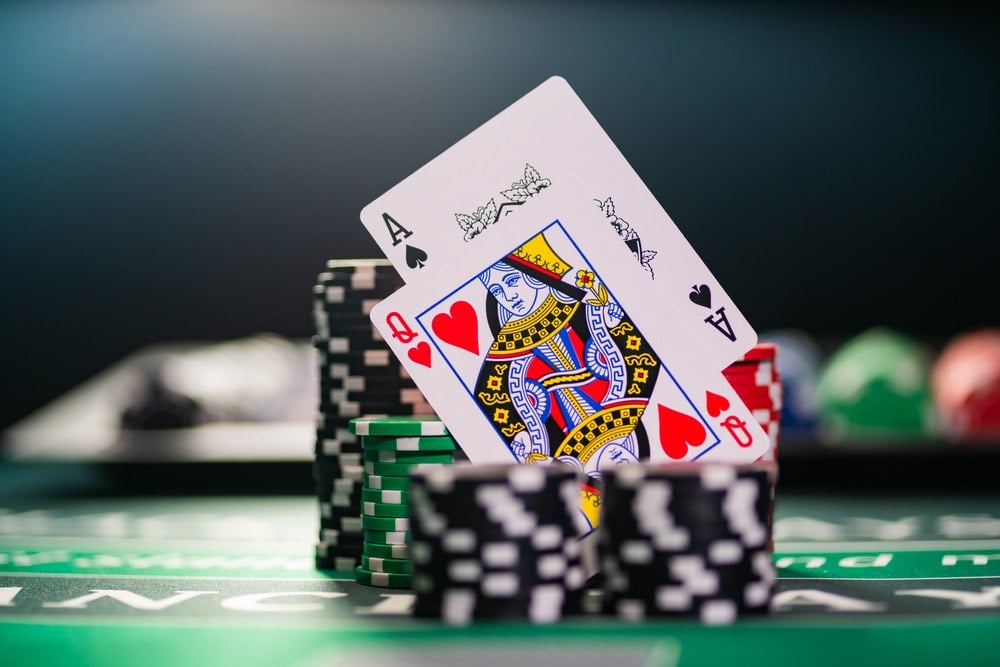
Image Credit: Netfalls Remy Musser/Shutterstock
Should You Hit or Stand on 16?
This is one of the trickiest hands in blackjack:
- If the dealer has a low card (2-6), standing is usually best; you want the dealer to risk busting.
- If the dealer shows a high card (7-10), hitting is often the smarter move; the dealer has a better chance of making a strong hand, so you need to improve your own.
Mastering Doubling Down
Doubling down allows you to increase your wager after the initial deal, but you’ll receive only one extra card. Use this move smartly to make the most of strong starting hands.
When Should You Double Down?
A widely trusted rule: always double down on 11. The odds of drawing a ten-value card are high, potentially creating a winning 21. Doubling on 10 is also a strong play, especially if the dealer shows a lower card (2-7). Remember, you only get one card after you double down, so use this move with care.
Splitting Pairs: When Two Hands Are Better Than One
If your starting hand is two identical cards, you can “split” them into two separate hands (with a new bet for the second hand).
Best and Worst Times to Split
- Always split Aces or 8s: Splitting Aces gives you two chances at a strong hand, while splitting 8s turns a weak total (16) into two hands with more potential.
- Avoid splitting 10s: You already have 20, which is a great total.
- Other pairs: Splitting can be risky, so focus on the house rules and consider the dealer’s up card.
Splitting Aces is especially advantageous: about 38% of the time, you’ll get a card valued at 9 or 10, resulting in a strong hand close to 21.
Beginner-Friendly Blackjack Strategies
For new players, sticking to proven blackjack strategies will help reduce the house edge and improve your chances. Here’s a simple breakdown:
- Hit when you have a total of 11 or less, or 12-16 if the dealer shows 7 or higher
- Stand with 17 or more, or when you have 12-16 against a dealer’s low card (2-6)
- Double down with a total of 11, or sometimes 10 depending on what the dealer shows
- Only split pairs of 8s or Aces
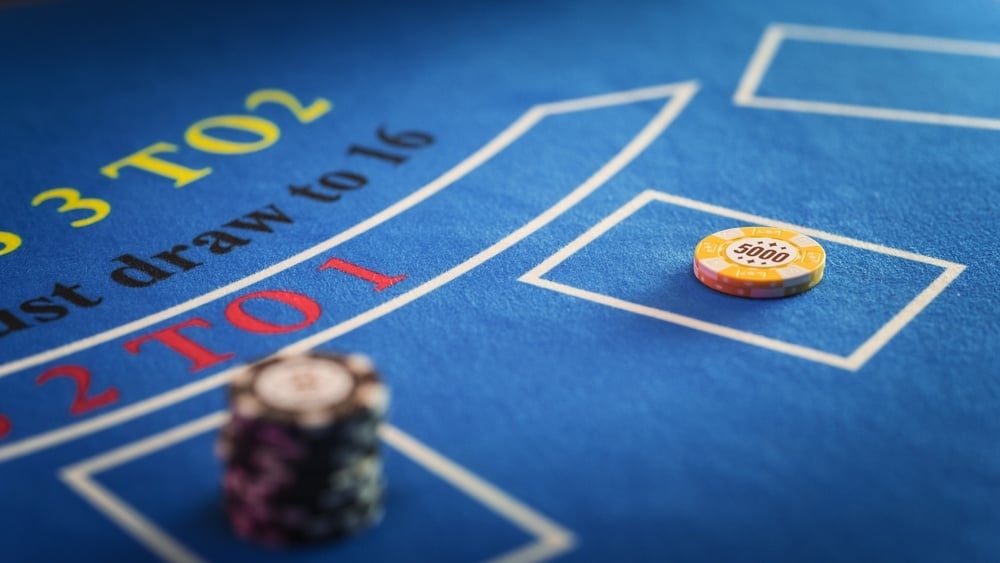
Image Credit: Kitreel/Shutterstock
Bankroll Management for Responsible Play
One of the best skills a new blackjack player can develop is smart bankroll management. Here are quick tips:
- Set a budget before you play and stick to it
- Make steady, reasonable bets-don’t be tempted to chase losses with larger bets
- Consider increasing your wager modestly after a win but never bet more than you can afford
- Adjust your strategy as you get more comfortable, but beginners should stick with the basics until experienced
Busting the Biggest Blackjack Myths
It’s easy to fall for misconceptions-here are some to avoid:
Myth 1: “Blackjack is All Luck”
While luck determines which cards appear, applying sound strategy (and even card counting) lets you influence the outcome and minimize casino advantage.
Myth 2: “Always Take Insurance”
Insurance is a side bet when the dealer shows an Ace. Statistically, this move only benefits the casino. At best, you’ll break even, but most of the time insurance will cost you money.
Myth 3: “You Can’t Beat the House Edge”
The house always has a small built-in advantage, but following a disciplined strategy keeps their edge under 1%. Good play means you can win in the short term and prolong your play.
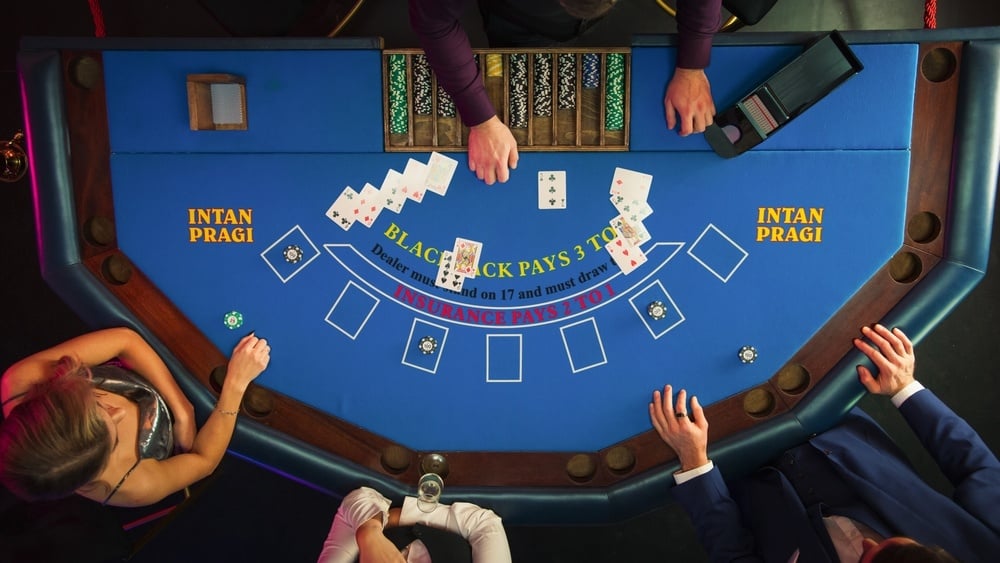
Image Credit: Kitreel/Shutterstock
Popular Types of Blackjack Games
Traditional (American) Blackjack
This is the most common form played in casinos. Players and dealer both start with two cards (one dealer card is hidden).
European Blackjack
The primary difference is the dealer does not receive their second card until after players have all made their decisions. This can slightly change player strategy.
Progressive Blackjack
Each round, a portion of bets goes into a growing jackpot, which can be won by making specific hands, like a suited blackjack or a 5-card 21. Rules and payouts differ between casinos.
Understanding Blackjack Payouts and Side Bets
Knowing how you get paid helps you plan your bets and manage expectations:
- Winning a hand: Paid 1:1-bet $10, you win $10.
- Blackjack: Typically pays 6:5 or 3:2. With 6:5 payout, a $10 bet nets $12. With 3:2, a $10 wager yields $15.
- Push (tie): Your bet is returned if you and the dealer tie.
Common Side Bets and Their Features
Side bets add excitement and big-win potential, though they generally favor the house. Popular choices include:
- Perfect Pairs: Win if your opening hand is a matching suited pair (like two Queen of Spades)
- 21+3: Creates a poker hand using your cards plus the dealer’s up-card, rewarding combinations like three of a kind or straight
- Lucky Ladies: Pays if your initial hand totals 20, with bonuses for two Queens of the same suit
Each casino or table may feature different side bet options and payouts, so always review the rules before joining.
Essential Casino Etiquette for Blackjack
Smooth interaction at the table makes the game more enjoyable for everyone. Follow these tips:
- Ask if Unsure: Dealers are there to help, and even experienced players can offer advice. Don’t hesitate to ask questions, especially if something isn’t clear.
- Avoid Touching Cards: Most casinos require cards to remain on the felt-this helps prevent confusion or cheating.
- Don’t Touch Your Chips After Betting: Once the round starts, keep hands away from your chips until the outcome is clear.
- Maintain Good Sportsmanship: Celebrate your wins and losses in moderation, respecting fellow players’ experience at the table.
- Move Tables if Needed: Don’t be afraid to leave a table that doesn't suit your style or comfort-finding the right environment is key to enjoying the game.
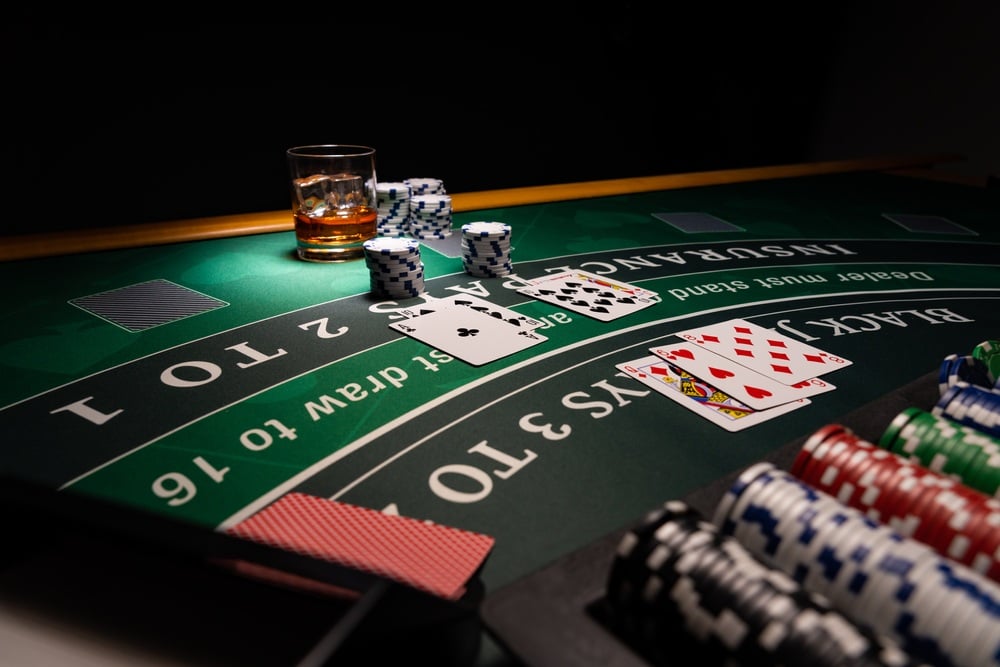
Image Credit: Netfalls Remy Musser/Shutterstock
Practicing and Improving Your Blackjack Skills
Practice builds skill and confidence. Here’s how to get started:
- Free Online Games: Countless digital platforms offer risk-free blackjack games, perfect for sharpening skills without spending money.
- Strategy Charts/Cheat Sheets: Printed guides simplify tough decisions. Most casinos allow them at the table, encouraging players to learn.
- Start Low-and Go Slow: Begin with minimal bets, especially online, while you develop a feel for various scenarios.
- Explore Bonuses: Some online casinos offer new players promotional funds, loyalty perks, or cashback opportunities. Read the terms to make the most of any welcome packages.
Your Next Steps: Enjoy Blackjack with Confidence
With these tips, strategies, and etiquette in hand, you’re now ready to experience blackjack like an informed player. Remember to keep it fun, manage your budget wisely, and take breaks if emotions creep in. As you continue to practice, your ability to make sound decisions will grow-and so will your enjoyment of this iconic casino card game.
Title Image Credit: Netfalls Remy Musser/Shutterstock













